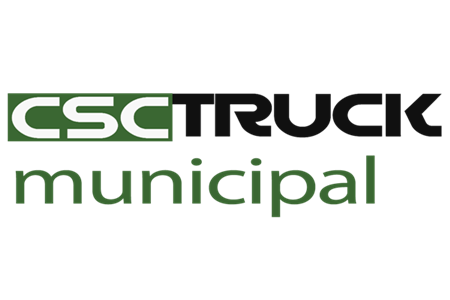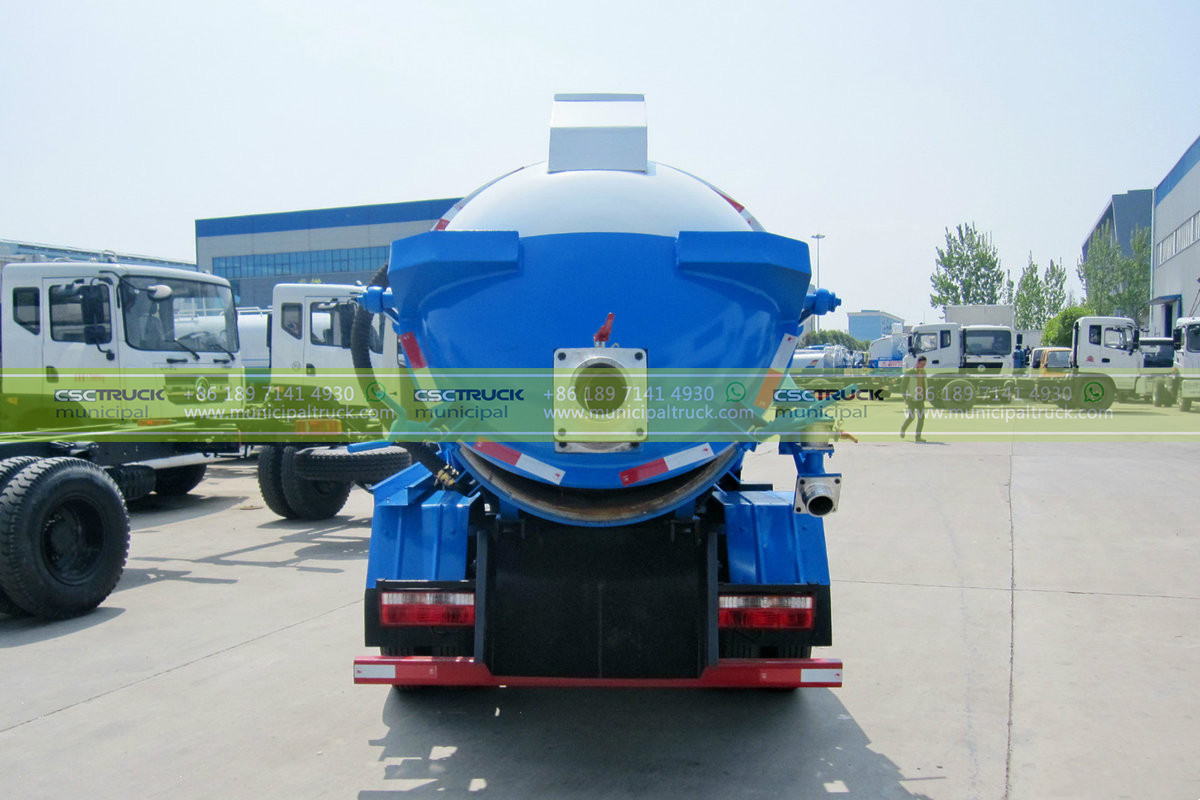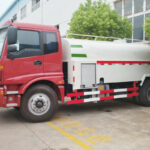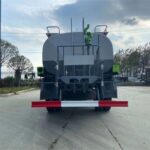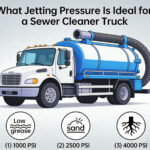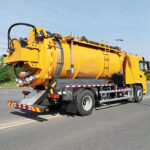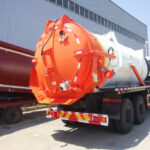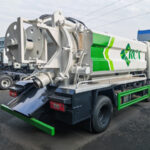The Physics of Clean: Harnessing Water as a Cutting Tool
The modern water jetting truck represents a paradigm shift in sewer maintenance, transforming ordinary water into an extraordinary cleaning force. At its core, this technology leverages fundamental fluid dynamics: water pressurized to 3,000–5,000 PSI and accelerated through specialized nozzles converts potential energy into kinetic energy capable of slicing through decades of accumulated obstructions. Unlike mechanical augers that merely bore holes through blockages, high-velocity water jets perform hydrodynamic scrubbing, simultaneously fracturing solids, scouring pipe walls, and flushing debris downstream. The truck’s onboard industrial pump—often a triplex plunger system—generates this immense pressure, while a high-volume water tank (typically 2,000–4,000 gallons) ensures continuous operation. Crucially, nozzle design dictates effectiveness: forward-jets penetrate obstructions, rear-facing jets propel the hose forward, and multi-orifice rotating nozzles create 360° cleaning coverage. This precise amalgamation of pressure, flow rate (measured in Gallons Per Minute), and nozzle engineering enables the removal of even the most tenacious buildup—including mineral scale, concrete-like fatbergs, and invasive tree roots—without damaging delicate pipe joints or aging clay infrastructure, establishing hydro-jetting as the gold standard for non-destructive sewer rehabilitation.
Beyond Unclogging: Precision Applications in Urban Wastewater Systems
Water jetting transcends simple pipe clearing, addressing complex urban sanitation challenges through targeted methodologies:
- Root Intrusion Mitigation: Precision Excision vs. Regrowth Prevention
Tree roots seeking moisture exploit microscopic pipe cracks, growing into dense masses that trap debris and cause chronic backups. Traditional root cutting provides temporary relief but stimulates aggressive regrowth. Advanced jetting trucks deploy specialized root-cutting nozzles with hardened steel blades that hydro-mechanically sever roots while simultaneously injecting EPA-approved root growth inhibitors (like foamed herbicides) into the surrounding soil. This dual-action approach extends maintenance cycles from weeks to years, preventing recurring blockages and protecting pipe structural integrity. - FOG Remediation: Deconstructing Fatbergs at the Molecular Level
Fats, Oils, and Grease (FOG) solidify into concrete-like masses adhering to pipe walls. Low-pressure flushing merely fragments these deposits, creating downstream blockages. High-temperature jetting trucks elevate water to 180°F–210°F, melting solidified grease while high-impact jets shear its bond from pipe surfaces. For severe fatbergs, emulsifying agents injected inline break molecular bonds, converting solid masses into pumpable slurries. This thermochemical-mechanical process achieves >95% FOG removal efficiency, eliminating the need for costly excavation in commercial districts and restaurant corridors. - Sediment Stratification Removal: Restoring Hydraulic Capacity
Decades of silt, sand, and grit accumulate in sewer bottoms, reducing flow capacity by 40–70%. Dredge nozzles with downward-angled jets fluidize sediment layers, while vacuum attachments (integrated or companion trucks) immediately extract the suspension. For large-diameter interceptors, oscillating bottom-blasting heads systematically traverse the pipe invert, restoring the original cross-sectional area without damaging benching or liner. This targeted sediment removal prevents chronic surcharging during storm events and eliminates hydrogen sulfide corrosion hotspots caused by anaerobic decomposition in trapped sludge.
Operational Synergy: The Indispensable Role of Vacuum Technology
While the jetting truck excels at dislodging and flushing debris, the vacuum sewer truck completes the cleaning cycle through integrated waste recovery. After hydro-jetting fractures and mobilizing obstructions, high-capacity vacuum pumps (generating 15–18 inches of mercury) transport the slurry through reinforced hoses into sealed tanks. This closed-loop system prevents released contaminants from migrating downstream or overflowing into basements. Critically, vacuum trucks equipped with debris-grinding impellers macerate roots and solids into pumpable particulates, enabling efficient transport to treatment facilities. For combined sewer systems, real-time jetting/vacuum coordination allows rapid cleaning before forecasted rain events, mitigating overflow risks. The operational marriage of pressurized water jetting and powerful vacuum extraction creates a comprehensive, environmentally compliant solution that transforms hazardous sewer cleaning from a disruptive excavation project into a minimally invasive, precision maintenance procedure, maximizing infrastructure longevity while protecting watersheds.
The next time you see a jetting truck’s telltale spray curtain enveloping a manhole, recognize it as more than a “pipe cleaner.” It’s a mobile environmental safeguard deploying engineered hydraulics to protect public health. From dissolving biological hazards in hospital laterals to preserving century-old brick sewers beneath historic districts, these systems epitomize efficiency, turning water into a surgical tool that maintains the hidden arteries of civilization, ensuring wastewater flows uninterrupted, and communities remain resilient against the persistent threats lurking below.
